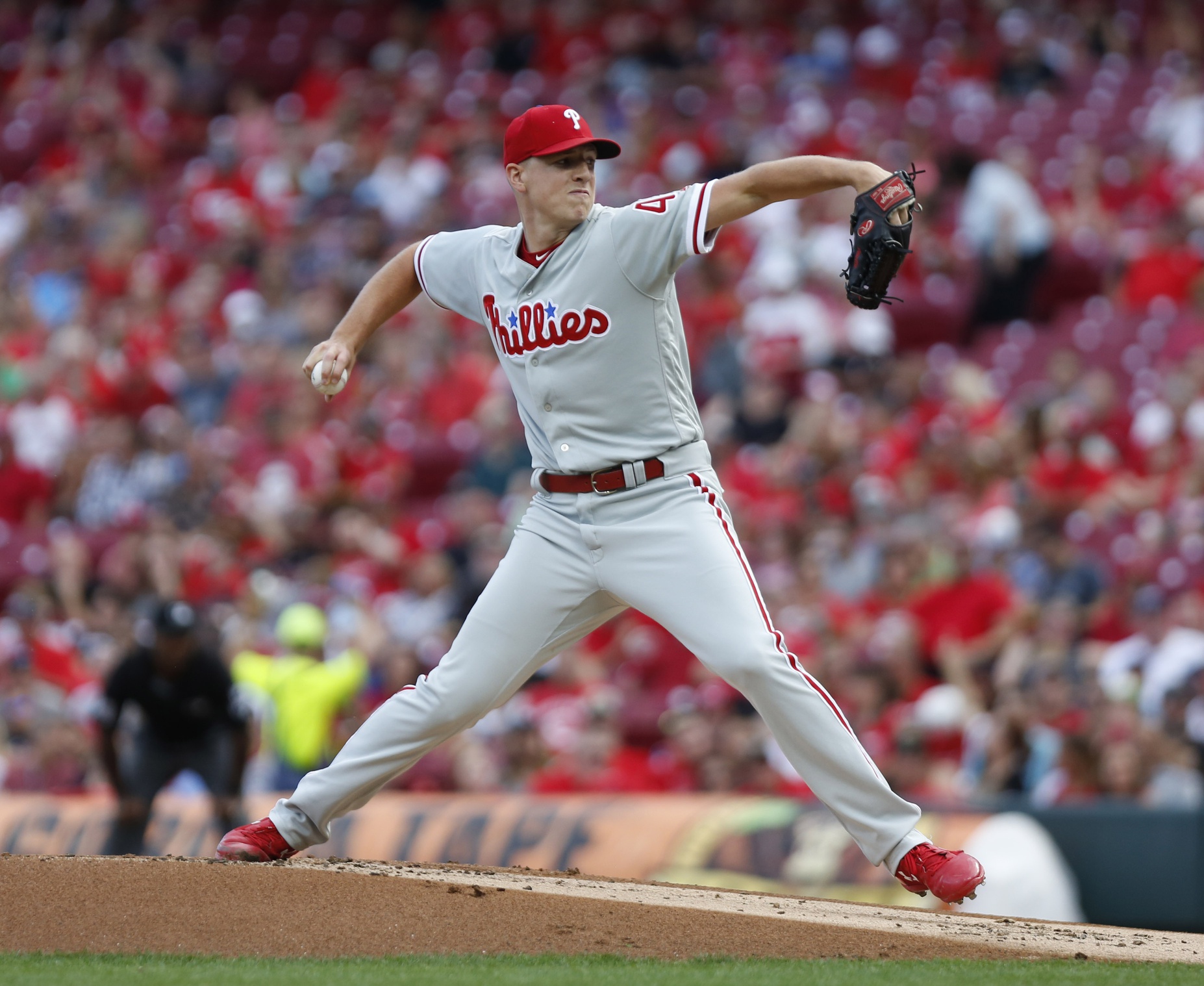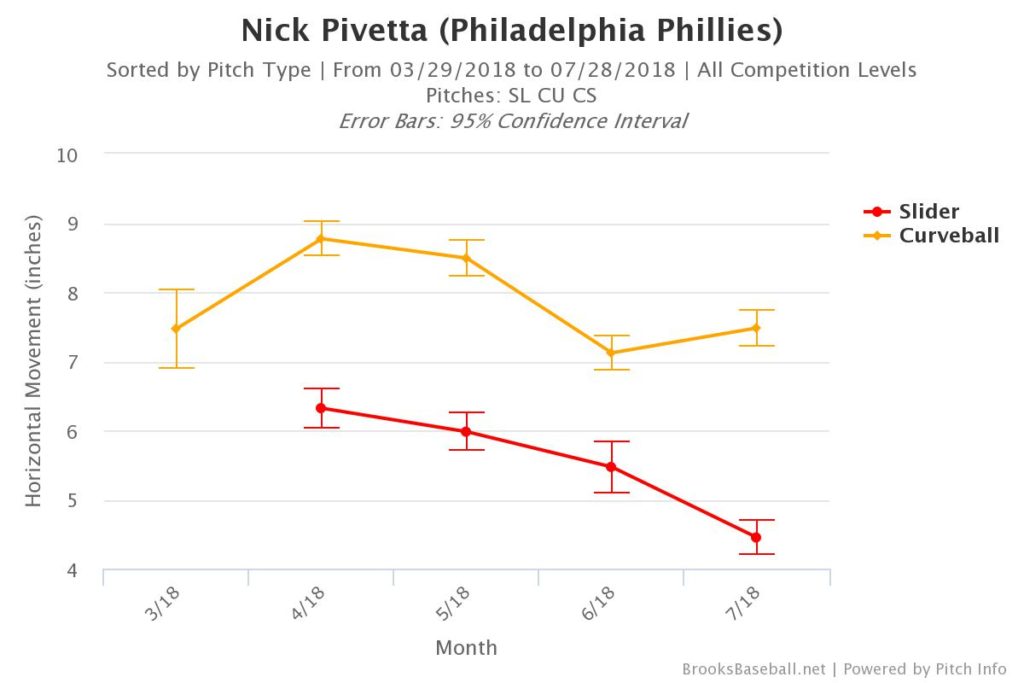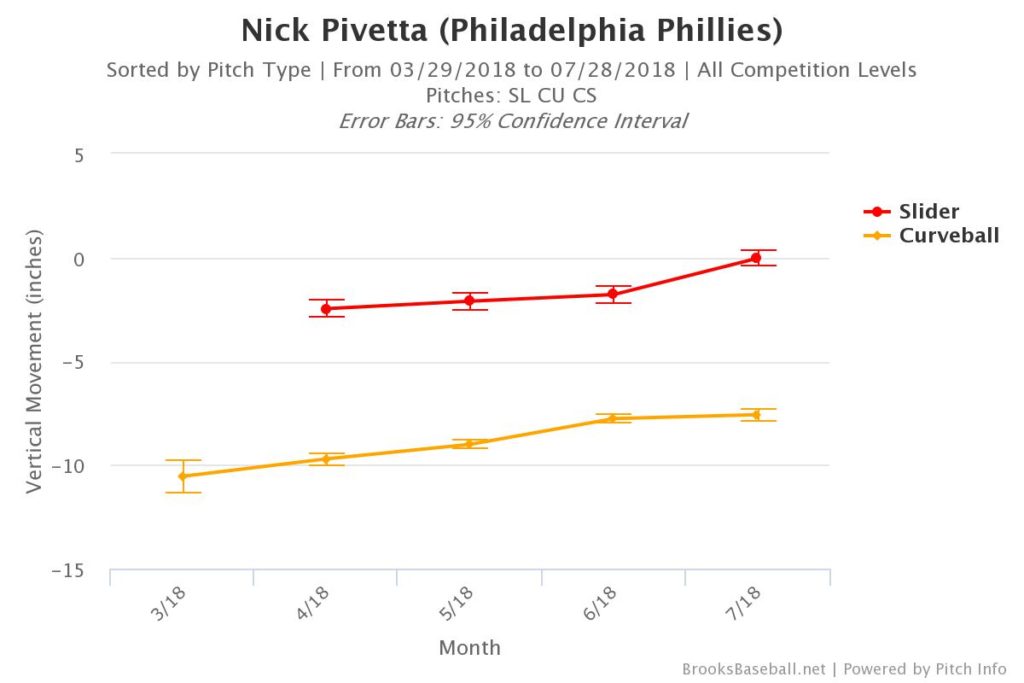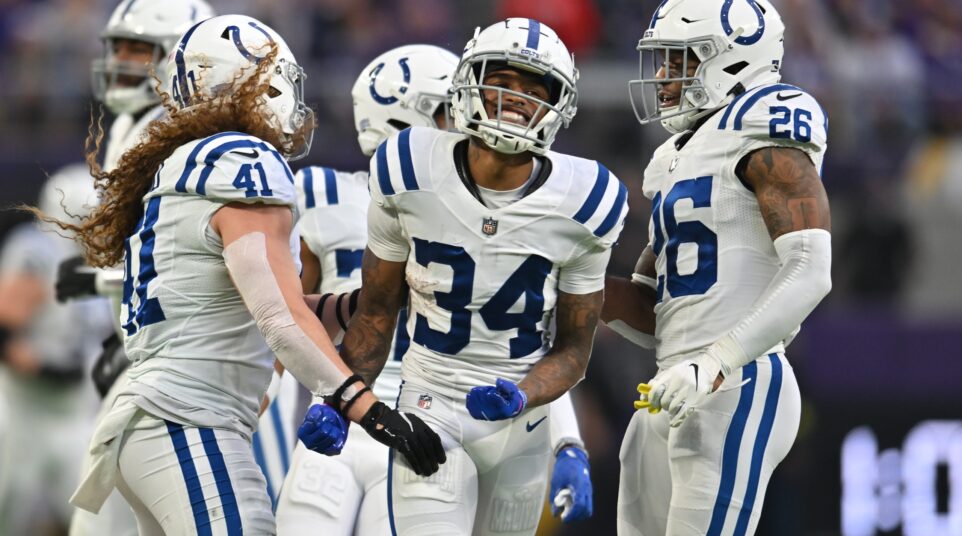
The Phillies Should Continue to Show Patience with Nick Pivetta
With each passing day the Phillies maintain their grip on first-place in the National League East, the amount of eyeballs on the team continues to grow, and, in turn, so does the scrutiny over player performance. As the wins over the season’s first four months have piled up, expectations have changed. The Phillies are no longer perceived locally as a cute upstart with a best-case scenario ceiling of fringe playoff contention. Given their current position in the standings, coupled with the significant progression made by many of the team’s young players, the Phillies should win their division.
Obviously, such an outcome would be, you know, good, but therein lies the problem. With increased expectations and scrutiny comes decreased patience and a lessened ability to wait out the expected growing pains and performance volatility of certain young players. And that brings us to Nick Pivetta, who once again gave his team an uneven performance in last night’s 6-4 setback to the Reds.
After an encouraging start to the 2018 season in which Pivetta posted an impressive 3.26 ERA, 2.80 FIP, and 1.09 WHIP while holding opposing hitters to a .226 batting average through 11 starts, things have taken a downturn for the 25-year-old. Over his next 11 starts dating back to June 1, Pivetta has pitched to a 6.70 ERA, 4.55 FIP, and 1.61 WHIP while opponents have hit .297 against him. That’s not the type of performance a team that is about to enter the stretch drive of a playoff push needs every fifth day, but Pivetta’s ceiling and ability are both undeniable. Despite his recent struggles, his 2.1 WAR is 27th among all starting pitchers and several of his peripheral numbers remain strong, thus creating a dilemma for the team about how to proceed with him moving forward.
His start last night in Cincinnati perfectly captured the essence of the issue. Featuring a fastball that topped out at 98.2 mph, Pivetta frequently overpowered Reds hitters on his way to piling up 12 strikeouts, something he often does with ease. His 11.2 K/9 rate is the 8th best in baseball among qualified starting pitchers this year. But mixed in with those flashes of brilliance was an inability to execute and limit damage once he got himself into jams which led to the Phillies’ 2-1 lead quickly becoming a 5-2 deficit. This has been a common theme with him lately, but a closer look at last night’s up and down start revealed an entirely different issue for Pivetta–his breaking pitches.
Entering last night’s game, Pivetta held opposing batters to a .177 average and .437 OPS in 62 at-bats that ended with a slider. In fact, his slider had yielded zero homers and only two doubles all season, while opponents also swung to a .222 average against his curveball. The Reds, however, repeatedly mashed Pivetta’s breaking stuff last night. All six of their hits came off breaking pitches, five of which were sliders. This, of course, included the home runs he allowed to Eugenio Suarez and Mason Williams.
So what? I mean, the Reds got some hits against the slider. Shit happens. That’s baseball, right? While that’s typically a reasonable response to much of what happens on the field, a deeper look reveals that perhaps the Reds’ success last night against his breaking stuff wasn’t a coincidence.
“Cool graphs, nerd.”
Yeah, I know. But follow me for a minute. What these charts illustrate is a significant decrease in both the horizontal movement and vertical drop of his breaking pitches. In the case of the vertical movement shown on the second chart, the upward trajectory of that line isn’t good. What were tight breaking pitches with above league average movement early in the season have recently flattened out. There are a few possible explanations for this. Mechanics, grip, fatigue, or injury are each possibilities, but given his excellent velocity, this doesn’t seem like a health-related issue. Whatever the cause, getting the bite back on his breaking pitches will be integral to Pivetta’s success down the stretch.
So what should the Phillies do? To be clear, he’s had issues beyond the breaking pitch. Consistency and control remain problems, but I mention this specific development to make the point that transitioning him into an unfamiliar relief role in the middle of a pennant race, which seems to be the popular suggestion, isn’t necessarily going to magically fix his issues. Given his immense talent, allowing Pivetta another two weeks worth of starts to see if he can figure it out provides the Phillies with the highest-ceiling outcome, and they would be smart to continue exuding patience with him, rather than making a panic move on the soon-to-expire trade market. If he continues to sputter, the smart play for the Phillies is to utilize the organization’s pitching depth and fill his spot in the rotation that way—even if it feels a bit uncomfortable as patience thins and the stakes continue to rise.







